Prevention Work

Healing is a matter for specialists, prevention is everybody's business!
Prevention is the cheapest and most effective way of fighting noma. Noma is a disease of poverty, and had hitherto never been a priority for governments or international organizations. Nobody had funded large-scale prevention efforts. We therefore need to encourage the large-scale national prevention programs of the WHO and other humanitarian organizations.
For this, it is vital to train the health workers and traditional healers who are present in villages to recognize noma at an early stage, because it then costs only a few francs for disinfectant and antibiotics to save the patient. The goal is to have one trained health worker in each village. In this way, thousands of children will be able to escape being horribly disfigured.
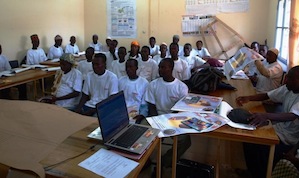
Training of health workers
One trained community health worker means an entire village protected
Health workers are trained by the regional “fight against noma” program, supervised by WHO. They visit villages to inform, educate and influence the behavior of mothers and the village community. They teach them the simple steps that save lives.
Winds of Hope’s campaign aims at educating and training health personnel through successive trickle-down programs, from the national level through regional and local levels, so as to have a community health worker or traditional healer in every village trained in the prevention, detection and early treatment of noma.
The presence of these trained workers in the field, from one village to the next, is one of the surest ways of transmitting notions of hygiene and nutrition, for the prevention and detection of the early symptoms of noma at a stage where the children can still be saved.
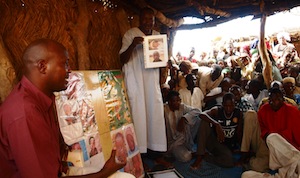
Raising public awareness
Preventing noma opens the way for families to be educated about hygiene and a balanced diet.
Giving knowledge to affected populations is the basis for prevention. This consists of informing the villages at risk about the existence of noma, and especially how to detect and prevent it. Information about the first signs of the disease and ways to treat and prevent it are disseminated through information campaigns and during public events and gatherings.
Good information should be given to the village community, particularly to mothers:
• They are the ones who can maintain a healthy environment with elementary habits that are often ignored, because they do not always form part of their normal routines: boiling water, covering dishes of food, washing children's hands, cleaning the area around the hut.
• They are the ones who can teach their children about cleanliness and who can detect their loss of appetite or lesions in the mouth.
• They are the ones who can improve their children’s diet by using local, natural produce, especially when they are babies.
These basic principles for better hygiene and improved nutrition are already formidable and extremely effective weapons, and not only against noma and other diseases.
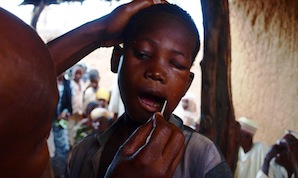
Early detection of the disease
Prevention is a cure, and above all a cure without disfiguring scars!
It results from training community health workers and traditional healers but also from raising the awareness of the community in general, and mothers in particular, about early detection of noma.
The community health worker has to monitor the nutritional status of children; respect for the immunization schedule; and oral and general bodily hygiene, as well as keeping the environment clean. To ensure early detection of suspected cases of noma, it is essential that he looks into the mouth of any malnourished child under 6 years old to check the status of the oral cavity by identifying:
• foul breath,
• hypersalivation,
• gingival bleeding,
• gingivitis and mouth ulcers
He needs to be aware that the presence of any of the above indications implies that the child is at risk of developing noma. He must then immediately organize for the child to be referred to the nearest health center and make a note of the case in the note-books and registers provided for this purpose.
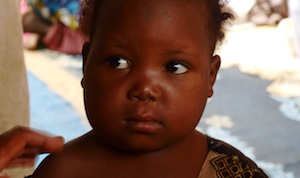
First aid and start of treatment
Antibiotics worth a few francs administered in time stem the disease
health workers or traditional healers can act early enough, just as soon as the disease is diagnosed.
Currently, this first line treatment is provided mainly by NGOs supported by Winds of Hope.
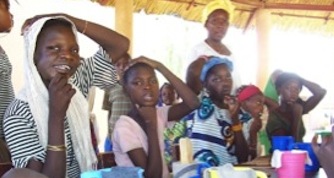
Rehabilitation through appropriate care
Postoperative care ensures that operations succeed
Reconstructive surgery and rehabilitation through appropriate post-operative care are the only measures that can do anything to improve the lives of noma victims who are not treated in time.
One of the absolutely essential forms of post-operative care is the face physiotherapy provided by an NGO supported by Winds of Hope. This allows victims who have undergone surgery to recover the face’s vital functions: eating, talking, breathing, smiling…
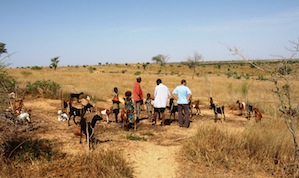
Rehabilitation through a project for life
Avoid falling into poverty
It is absolutely essential to give these children recovering from noma the tools they need to avoid falling back into poverty, by helping them with vocational training.
In addition, these children and their families receive assistance with housing, animal husbandry, agriculture or starting a small business.
Challenges faced
To ensure the effectiveness of our work
The challenges are still numerous:
• Motivation of CHWs for their mission
• Transportation of villagers to health centers
• Psychological care
• Nutritional management
• Medical and surgical treatment
• Rehabilitation of facial functions
• Reintegration (family, school, employment).







